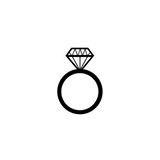https://youtu.be/hobKZ_3woN0
As MY FAUX DIAMOND offers both stones in our settings, this question comes up often. The main thing that they have in common is the fact that they are both man made stones, made to look like genuine diamonds, but at a much cheaper price. There is a HUGE difference between the two stones. Your choice in stone is usually based upon your personal preference, your budget as well as the durability of the stone, and the longevity of the stone’s value. Cubic Zirconia is actually cheaper for a reason, and that reason is mainly that it is not a stone, it is cheap to create and is NOT as durable as moissanite. However, for those who are budget, conscious plan on using their faux ring sparingly, or plan to add genuine stones later, a CZ is a perfect choice for you today. 5A rated Cubic Zirconia has the same brilliance as many diamonds do…and can be confused by many except for a professional jeweler! Moissanite is silicon carbide, a compound with chemical formula SiC. On the other hand, cubic zirconia is zirconium dioxide, ZrO2. Moissanite is composed out of silicon and carbon, whereas CZ in its crystal lattice contains zirconium and oxygen.
Diamond, as you probably know, is pure carbon. If you compare both of them to diamond, moissanite comes much closer. In fact, moissanite can be understood as being obtained by replacing some of the carbon atoms in the crystal structure of diamond with silicon. Even the local bonding is very much preserved, because silicon has the same valence as carbon and can be accommodated in the same environment. Cubic zirconia is much more different, as it contains zirconium, which is a relatively heavy element with totally different properties. This is why CZ has a higher specific gravity — around 6 — which is almost twice as much as moissanite’s specific gravity of 3.2.The crystal structure of Moissanite is hexagonal, with stacking order ABAC for tetrahedral structures. The structure of CZ (cubic zirconia) is obviously cubic. This as a consequence has the fact that moissanite is not isometric, and is doubly refractive, unlike cubic zirconia or diamond. The double refractivity means that each light ray entering a double refractive crystal or gemstone is decomposed into two rays, unless the crystals are observed from a special direction called optical axes where there is no such effect.
Moissanite is often cut in such a way that the table facet is perpendicular to its optical axis, so if you look at it from the top facet of the stone you won’t see this doubling effect. On the other hand, it can be argued that the very same doubling effect contributes to the increased beauty of moissanite. i.e., it leads to high brilliance (refractive index) and fire (dispersion). When it comes to durability, the durability of a gemstone is determined largely by its hardness. But, other factors can also come into play, such as internal strains in the structure, so be careful. Even though all three stones, moissanite, diamonds, and cubic zirconia, are relatively hard, that does not mean they are unbreakable.
The hardest and most durable is diamond with the maximum possible hardness of 10 on the corresponding scale. Moissanite is dangerously close with 9.2, and the least hard of them is CZ with 8-8.5. Another property worth examining is the toughness. It is the resistance to breaking. Cubic Zirconia has a very poor toughness when compared to Moissanite: 2.4 versus 7.6. Moissanite is almost three times tougher, i.e., three times more resistant to breaking and chipping.
We hope this information has helped you in your decision process. Watch a comparison between moissanite and 5A rated Cubic Zirconia here:
All moissanite stones by Charles & Colvard® include a limited lifetime warranty, and you can learn more about the various moissanite we offer here:
http://WWW.MYFAUXDIAMOND.COM/MOISSANITE-FAQ_EP_46-1.HTML
http://www.myfauxdiamond.com/Cubic-Zirconia-vs-Moissanite-Gems_ep_71-1.html

